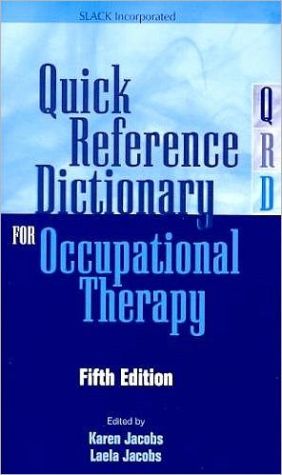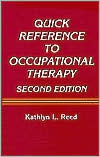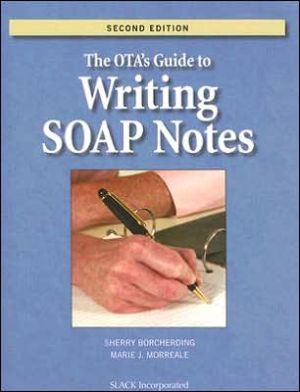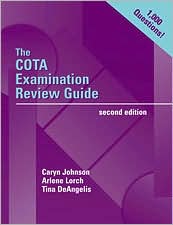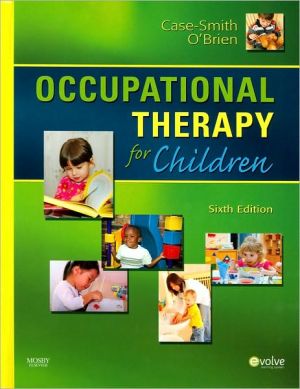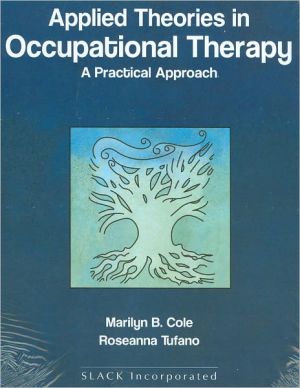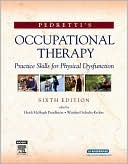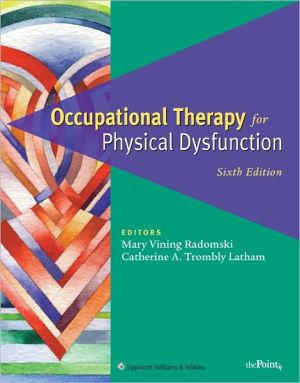Physical Agent Modalities: Theory and Application for the Occupational Therapist
The successful Physical Agent Modalities: Theory and Application for the Occupational Therapist has been updated and revised into a comprehensive Second Edition that logically provides a foundation for understanding the bio-physiological effects of physical agents and their impact on an individual’s occupational performance and functioning.\ Recognized as an expert in physical agent modalities, Dr. Alfred Bracciano clearly and effectively explains difficult concepts in an easy-to-understand...
Search in google:
The successful Physical Agent Modalities: Theory and Application for the Occupational Therapist has been updated and revised into a comprehensive Second Edition that logically provides a foundation for understanding the bio-physiological effects of physical agents and their impact on an individual’s occupational performance and functioning. Recognized as an expert in physical agent modalities, Dr. Alfred Bracciano clearly and effectively explains difficult concepts in an easy-to-understand format and presents information that can be readily applied in the clinical setting. Physical Agent Modalities, Second Edition provides the occupational therapist and student with a user-friendly and organized reference on the application of physical agent modalities, commonly used by occupational therapists, as well as emerging technologies and interventions such as lasers and electromyographic biofeedback. This Second Edition outlines the application procedures for each modality, indications for their use, and the precautions and contraindications of the modality. New graphics and pictures enhance the reader’s understanding of the physical agents, while case studies facilitate clinical reasoning and provide a practical resource to safely and effectively understand and use physical agents. New to the Second Edition: • A chapter outlining a theoretical framework for physical agent modalities used by occupational therapists based on the AOTA Occupational Therapy Practice Framework • Extensive coverage of the changes in state regulatory issues and guidelines impacting the use of physical agents by occupational therapists • A discussion on the impact of the revised AOTA PAM Position Paper, NBCOT Practice Analysis, and the ACOTE requirements on the education and training of occupational therapists in physical agent modalities • A chapter reviewing laser and light therapy, clinical applications, precautions, and indications for use Each Chapter Contains: • Objectives • Glossary of Key Terms • Case Studies • References With a user-friendly format, updated chapters, and volumes of new information, Physical Agent Modalities: Theory and Application for the Occupational Therapist, Second Edition provides clinicians, educators, and students with a common language to facilitate the incorporation of physical agents into clinical practice grounded in evidence-based practice. Retta P. Johnson This is the first text written for occupational therapists on the specific use of physical agent modalities (PAM). The purpose is to provide a basic educational foundation in use of the PAM and illustrate clinical reasoning processes associated with their applications. The use of PAM is a necessary occupational therapy competency in some areas of practice and contributes to efficient cost containment and improved functional outcomes. Occupational therapists and students are the intended audience. The author examines the controversies and philosophical issues surrounding the use of PAMs by occupational therapists in the introduction. He also provides a disclaimer that the text does not function as an application of occupation in treatment, but that PAM is used to augment occupational performance. Some case examples at the end of each chapter include examples of occupation-based OT intervention strategies with specific PAM application. Some areas that would require supplemental information for practicing therapists include precautions and contraindications for PAM use, patient assessment prior to application, selection of optimal treatment parameters (frequency, intensity, electrode sizing), the stepwise sequencing of treatment applications, and the documentation of PAM treatments. This text is well organized, and the author provides clearly stated chapter objectives and well-formatted illustrations. He provides the practicing occupational therapist with a basic resource text for the application of PAMs in the clinical setting. Although the application of PAM is not considered a requirement for entry into the field, this is a brief introduction that could be useful to OT students.
Dedication vAcknowledgments ixAbout the Author xiContributing Author xiiiPreface to the Second Edition xvPhysical Agent Modalities: A Theoretical Framework 1Regulatory Guidelines for the Use of Physical Agents 15Wound Healing 45Pain Theory and Perception 63Cryotherapy 77Thermotherapy: Superficial Heat Agents 101Therapeutic Ultrasound and Phonophoresis 125Principles of Electrotherapy Alfred G. Bracciano, EdD, OTR/L, FAOTA Kirk Peck, PT, PhD, CSCS 157Neuromuscular Electrical Stimulation: Applications and Indications 185Trancutaneous Electrical Nerve Stimulation 219Iontophoresis 243Low Level Laser and Light Therapy 261NMES Hand Rehabilitation Guide 279NMES Parameter Overview 283MET and CES Treatment Protocols 287Index 291
\ From The CriticsReviewer: Jessica Chua Cheng, MS, OTR/L(Rush University Medical Center)\ Description: Dr. Bracciano makes a strong case for the relevance and efficacy of using physical agent modalities (PAMs) as preparatory and adjunctive interventions to facilitate the overall goal of maximizing function in the second edition of his book, which was first published in 2000.\ Purpose: The author's primary objective is to provide clinicians with the framework and foundation with which to treat patients safely and effectively through the use of PAMs. Given the paradigm shift in the world of occupational therapy towards employing PAMs to facilitate occupational performance, this book is especially relevant for therapists treating populations with physical dysfunction. Overall, the author successfully delivers a comprehensive resource for clinicians interested in enriching their practical knowledge of effective PAM usage. \ Audience: This book is primarily written for clinicians treating clients with physical disabilities in settings such as acute medicine, inpatient rehabilitation, outpatient rehabilitation, and day rehabilitation programs. Overall, it appropriately addresses the concerns of therapists in the clinical arena; however, it also may prove to be a valuable resource for occupational therapy students, as PAMs have recently been integrated into occupational therapy academic programs. Dr. Bracciano is an established educator with expertise in the fields of orthopedics and upper extremity injuries, and his comprehensive book is useful for both students and clinicians. \ Features: The book provides an evidence-based approach to PAMs, as well as a physiological basis for their use. Additionally, clinicians will find the applications, precautions, contraindications, specific application techniques, parameters for usage, and case studies practical. Furthermore, students may view the foundational information underlying PAMs intervention particularly helpful. For example, the chapters that cover wound healing, pain theory, and principles of electrotherapy are key in that they provide students with an essential basis for understanding how to efficaciously incorporate PAMs into treatment. One shortcoming is the redundancy with which the author urges readers to integrate PAMs into their therapeutic repertoire as an adjunctive intervention. \ Assessment: This second edition provides both clinicians and students with a comprehensive resource on efficacious use of PAMs buttressed by foundational knowledge and practical application. As a practicing therapist who works in inpatient rehabilitation, I will be sure to consult this book to fortify my working knowledge of PAMs.\ \ \ \ \ Retta P. JohnsonThis is the first text written for occupational therapists on the specific use of physical agent modalities (PAM). The purpose is to provide a basic educational foundation in use of the PAM and illustrate clinical reasoning processes associated with their applications. The use of PAM is a necessary occupational therapy competency in some areas of practice and contributes to efficient cost containment and improved functional outcomes. Occupational therapists and students are the intended audience. The author examines the controversies and philosophical issues surrounding the use of PAMs by occupational therapists in the introduction. He also provides a disclaimer that the text does not function as an application of occupation in treatment, but that PAM is used to augment occupational performance. Some case examples at the end of each chapter include examples of occupation-based OT intervention strategies with specific PAM application. Some areas that would require supplemental information for practicing therapists include precautions and contraindications for PAM use, patient assessment prior to application, selection of optimal treatment parameters (frequency, intensity, electrode sizing), the stepwise sequencing of treatment applications, and the documentation of PAM treatments. This text is well organized, and the author provides clearly stated chapter objectives and well-formatted illustrations. He provides the practicing occupational therapist with a basic resource text for the application of PAMs in the clinical setting. Although the application of PAM is not considered a requirement for entry into the field, this is a brief introduction that could be useful to OT students.\ \ \ BooknewsA textbook for Bracciano's (occupational therapy, Saginaw Valley State U., Michigan) students, relating the potential benefits of physical agents to occupational performance. He provides student and practicing therapists with basic foundational knowledge in application and theory, leaving the underlying basic science to specialized courses. Coverage includes wound healing, pain theory and perception, cryotherapy, superficial heat agents, therapeutic ultrasound and phonophoresis, transcutaneous electrical nerve stimulation, iontophoresis, and electrotherapy. Annotation c. Book News, Inc., Portland, OR (booknews.com)\ \ \ \ \ 2 Stars from Doody\ \

